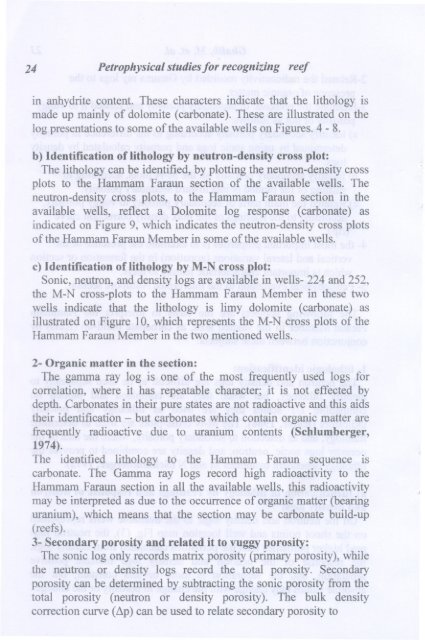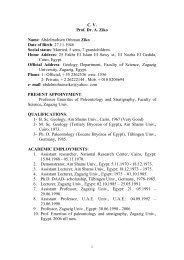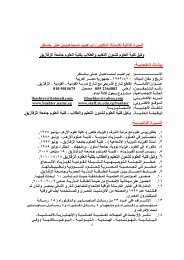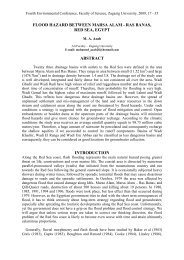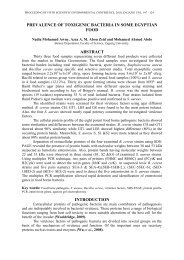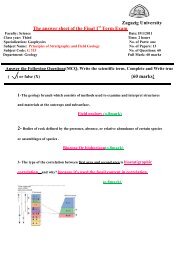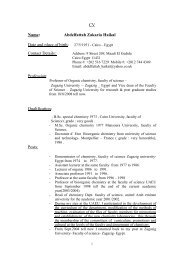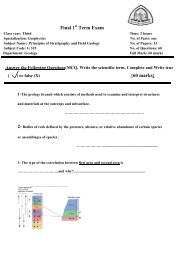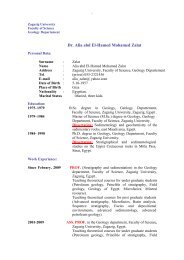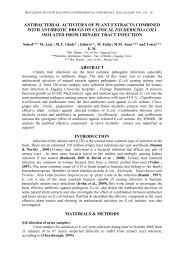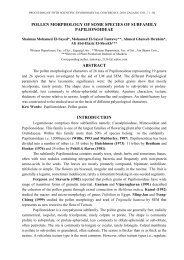GEOPHYSICS LETTERS
GEOPHYSICS LETTERS
GEOPHYSICS LETTERS
- No tags were found...
You also want an ePaper? Increase the reach of your titles
YUMPU automatically turns print PDFs into web optimized ePapers that Google loves.
24 Petrophysical studiesfor recognizing reefin anhydrite content. These characters indicate that the lithology ismade up mainly of dolomite (carbonate). These are illustrated on thelog presentations to some of the available wells on Figures. 4 - 8.b) Identification of lithology by neutron-density cross plot:The lithology can be identified, by plotting the neutron-density crossplots to the Hammam Faraun section of the available wells. Theneutron-density cross plots, to the Hammam Faraun section in theavailable wells, reflect a Dolomite log response (carbonate) asindicated on Figure 9, which indicates the neutron-density cross plotsof the Hammam Faraun Member in some of the available wells.c) Identification of lithology by M-N cross plot:Sonic, neutron, and density logs are available in wells- 224 and 252,the M-N cross-plots to the Hammam Faraun Member in these twowells indicate that the lithology is limy dolomite (carbonate) asillustrated on Figure 10, which represents the M-N cross plots of theHammam Faraun Member in the two mentioned wells.2- Organic matter in the section:The gamma ray log is one of the most frequently used logs forcorrelation, where it has repeatable character; it is not effected bydepth. Carbonates in their pure states are not radioactive and this aidstheir identification- but carbonateswhichcontainorganicmatterarefrequently radioactive due to uranium contents (Schlumberger,1974).The identified lithology to the Hammam Faraun sequence iscarbonate. The Gamma ray logs record high radioactivity to theHammam Faraun section in all the available wells, this radioactivitymay be interpreted as due to the occurrence of organic matter (bearinguranium), which means that the section may be carbonate build-up(reefs).3- Secondary porosity and related it to vuggy porosity:The sonic log only records matrix porosity (primary porosity), whilethe neutron or density logs record the total porosity. Secondaryporosity can be determined by subtracting the sonic porosity from thetotal porosity (neutron or density porosity). The bulk densitycorrection curve (L\p)can be used to relate secondary porosity to


